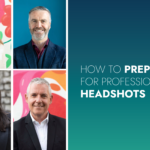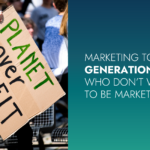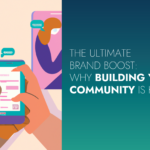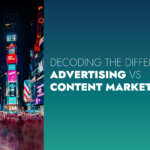As our Editorial Assistant and resident Friends expert, Hayley Dorney knows a good story when she sees one. She shares her knowledge in this blog post about how storytelling can improve your content.
Chatting in the office with your co-workers about the newest addition to Netflix. Whiling away your commute with a podcast playing into your ears. Splitting your sides as a friend recalls the embarrassing encounter they just had. Unashamedly crying into your cushion as the latest supermarket/bank/insurance ad airs. What is the common thread here? In one way or another, it’s the art of storytelling.
Thanks to the digital age, you can hardly go 10 minutes without encountering a story. In 2017 we were inundated with announcements of how video has taken over the world – and that wasn’t an exaggeration. According to SproutSocial, Facebook gets over 8 billion average daily video views. Every video you watch is telling you a story, and in a quick and easily digestible format.

We recently discussed the difference between traditional advertising and content marketing, and the key takeaway was that you must ensure your brand answers the questions that potential customers are asking – without pushing your product down their necks.
Storytelling is a fantastic way of doing this: viewers become emotionally invested in the characters of your story (who are asking the questions your target audience are asking/experiencing the conflict your target audience are experiencing), and are satisfied to see your brand involved in their happy ending. This creates a sense of brand affinity for customers, and when the time comes to make a purchase, they think of you.
There is literal science behind the effectiveness of storytelling. Anyone who likes music is listening to stories every time they press play, those who obsessively scroll through hilarious memes on Instagram (raising my hand here) is laughing at short stories, anyone that tunes in to their favourite talk show to hear how the other half live — we all want a glimpse into the lives of others and to see the ups and downs and outcomes. Storytelling gets through to all of us, so why not let your brand benefit from the medium of a story?
How can you actually use storytelling to create compelling content?

Well you can use words, visuals and design, video and music to portray your message. A popular method is to use the 3-act structure. This is your standard beginning, middle and end story. Act 1 is where you’ll set up the story and introduce your main characters (your target audience).
Let’s say your brand sells skateboards. Your story might start with your average working guy. We’re introduced to him as he gets up for work one morning. He brushes his teeth, takes a shower and gets dressed. He heads downstairs where he feeds his cat and has breakfast. He checks the time and realises he needs to hurry up or he’ll be late, so he quickly grabs his stuff ready to leave the house.
Act 2 is where your main character experiences his conflict. It’s then that he notices his cat has left a little liquid gift for him on the floor. In fact, she’s left one big puddle and 3 mini puddles all around the kitchen. Working guy mumbles in anger and grabs some kitchen towel in a panic and tries to hurriedly clean the mess.
When he finally gets it all cleaned up, he glances at his watch and sighs at the 5 minutes he’s lost. He runs out the door and speeds towards the bus stop, but is dismayed to see the bus pass him out and drive straight past his stop. Cut to working guy in the office, getting told off by his boss for being late.
The following morning we see the same scene play out minus the kitty scenario. Working guys leaves the house and is half way to the bus stop when he realises he’s left his wallet at home. In a fit of frustration he runs back home to retrieve his wallet and checks the time. He’s going to miss the bus. He thinks for a moment and grabs his car keys. This is his best chance. Working guy hops into his car and takes off at top speed. Only he doesn’t get very far in the city traffic. It’s totally jammed. Cut to working guy in the office, getting told off by his boss for being late again.
Act 3 follows now with the resolution to the main characters conflict. That evening he sees your brand skateboard for sale and muses to himself. The following morning we see the main character get up for work like before, only this time he spills coffee all down his shirt.
He runs into his room to find a new shirt, struggles to locate a clean one and pelts to his kitchen radiator to find a newly washed one. He checks the time and is again running late. This time however we see working guy happily skateboarding through the city, bypassing all traffic. Cut to the office and our main character sits at his desk and greets his boss as she walks through the doors. He’s early.
Your product is only seen once, and therefore not being forced down anyone’s necks, yet is still the hero of the story, hopefully springing to mind the next time a person on commute is late.

Storytelling = Emotions
Another effective method of storytelling is to simply be emotive. Last Christmas, Aviva, a client of ours, released a wonderful video where they asked school kids what gifts they think their parents would love for Christmas. The second half of the video shows the kids actually giving the gifts to their parents, with amazingly heart-warming results. Check it out below:
For advice on how your brand can adapt the art of storytelling to boost your content, get in touch!


















